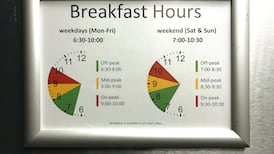Denmark has become the first European country to start stripping Syrian refugees of their residency rights, saying that Syria's capital city, Damascus, and its surrounding areas are safe for them to return to.
The move ignores the fact that the vast majority of Syrians fled Bashar al-Assad and his regime, which is still in charge of the country today, 10 years after one of the world’s most devastating wars began.
Hundreds have been affected by the Danish move so far, including 70 refugee children, according to charity Save the Children.
“You simply cannot say that any part of Syria is safe. Such an argument is not in line with international standards and does not reflect the reality on the ground,” said Save the Children’s Syria response director Sonia Khush this week.
“Denmark was the first country to sign up to the Refugee Convention in 1951. It is now setting a dangerous precedent by effectively taking the first step to send people back to a place that is far from safe.”
In late 2017 I travelled to regime-held Syria, visiting Damascus, Homs and Aleppo. In Damascus, bombs were still audibly falling on nearby Eastern Ghouta, which was under siege. But in the rest of the city people were frightened too: scared of soldiers who manned checkpoints, and informers who watched out for suspect behaviour. They knew they could be harassed, conscripted or detained at any time.
As a foreign visitor, I was constantly monitored by the regime’s ministry of information. People I spoke to were at risk of being interrogated by intelligence officers.
I was there to investigate what was happening to refugees who tried to return from Europe. Despite the restrictions, one night I managed to meet a man who had flown back to Syria from Germany. He told me how he had been arrested at Damascus airport, tortured and incarcerated in a packed cell filled with other returnees, and then conscripted into the army, where he narrowly survived a suicide bombing.
Proving the scale of what is happening is never going to be possible, because of the level of danger to anyone inside the country who speaks out or provides information
I later received information, through other sources, about returnees who were disappeared or murdered shortly after arriving. The following year, my Irish Times reporting was used as evidence in a legal challenge against the German government, where lawyers argued that young Syrian men should be given a higher level of protection than the insecure standard they were getting. I was flown to Berlin to testify, but the case ultimately failed, with the judges ruling that there was not enough evidence that all male returnees were being targeted in this way.
But proving the scale of what is happening is never going to be possible, because of the level of danger to anyone inside the country who speaks out or provides information.
Syria is a dictatorship. The 2021 Press Freedom Index, released by Reporters Without Borders, ranked it in the eight least-free countries globally.
Since the war began, Islamic State’s role in Syria garnered more headlines – and the Assad regime played that up, condemning all opposition forces as “terrorists”. But Assad’s forces were the ones who fired live bullets at peaceful protesters; who barrel-bombed whole communities and gassed children.
By 2019, nearly 128,000 people had disappeared into Assad's prisons, according to monitoring group the Syrian Network for Human Rights, with tens of thousands assumed to be dead.
I have interviewed former detainees who showed me scars on their body from the torture they endured – the marks of ropes still visible on their wrists, or welts from beatings across their torsos. Their minds are scarred, too, albeit less visibly. They have flashbacks and nightmares, and are still terrified about being publicly identified.
Last year a well-known Syrian activist, Mazen al-Hamada, took the risk of returning back to his homeland, after reportedly making a deal with the Syrian regime to guarantee safe passage. But there is no safety in Syria, particularly for anyone who had the nerve to speak out about what was going on. Al-Hamada disappeared upon arrival. Friends fear he is dead.
Heartbroken, torn from their homes and families and dispersed across the world, many of Syria's survivors have still not found safety or security
Since 2011, 6.6 million Syrians have fled the country, while 6.7 million are displaced inside it. The vast majority of refugees are sheltering in neighbouring countries, such as Turkey, Lebanon and Jordan, where they are increasingly exploited and vilified. Wherever I meet Syrians, they almost unanimously say they could not envisage returning home until Assad is out of power – and it currently feels like that day will never come.
Elections have been announced for May 26, but they will be neither free nor fair. I've interviewed detainees who were pulled out of packed prison cells in 2014 and forced to vote for Assad. They say any vote will be a sham.
In 2013 tens of thousands of photos of people killed in government custody were smuggled out of Syria by a military defector codenamed Caesar. They showed bodies covered in signs of starvation, torture, suffocation, beatings and gunshot wounds. Syrians missing relatives scanned the faces of those corpses to see if they could identify their loved ones. I worked on breaking the story at CNN. At the time, we hoped there would be some accountability. That didn't happen.
In Germany war crimes trials are finally proceeding, but only low-level officials and early defectors are available to be prosecuted. In February, Eyad A, a former member of Syria's secret service, was found guilty of aiding and abetting crimes against humanity in Damascus, after a trial held in the city of Koblenz.
Heartbroken, torn from their homes and families and dispersed across the world, many of Syria’s survivors have still not found safety or security. For them, Denmark’s latest rejections are another form of torture.









